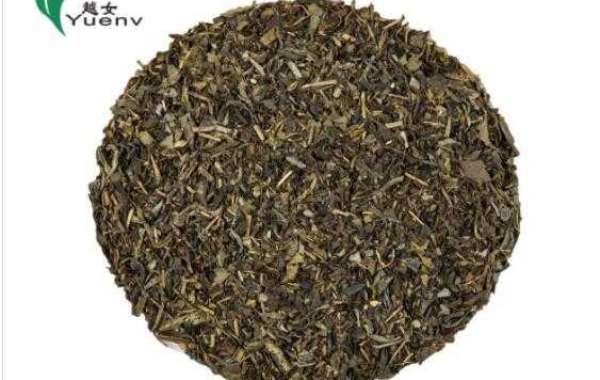With the improvement of people's aesthetics of Pu'er Tea China Green Tea, the raw materials and technology have also improved. Nowadays, it is not difficult to drink a cup of ripe Pu'er tea without peculiar smell.
But when you drink some cooked tea that is not good enough, there will still be different types of peculiar smells. Why does the cooked tea have a peculiar smell? There are mainly three reasons: 1. The early technology is immature; 2. The raw materials are not particular; 3. The storage conditions are not in place.
There are two attitudes towards peculiar smell in the market:
First, gradually be able to accept these tastes, especially many old teas are restricted by the conditions of the times, and cannot be required according to today's perfect standards. Some shortcomings of old tea have become the characteristics of old tea and are favored by many old tea customers.
Second, it is unacceptable.
Whether to accept or not depends on the individual's aesthetic value and is a matter of opinion. Next, we will analyze in detail the common peculiar smells of these cooked teas.
1. The peculiar smell produced by the raw material: smoke smell, coarse old smell
2. The peculiar smell produced by the process: heaping smell, rancid sour smell
3. Miscellaneous odors from storage: gray, oxidized, warehouse, musty, and paper odors
1. Heap
What is it?
Heap smell, generally refers to the smell produced when the ripe tea is piled up and fermented.
In the actual production process, you will find that the smell from the tea pile is actually very fragrant most of the time, so from a certain perspective, the pile smell is not completely peculiar.
But generally speaking, heap smell is derogatory, referring to fishy smell, rust smell, muddy smell, etc.
Market view?
The heap smell in the context of the market refers to the smell produced by some miscellaneous bacteria that may make people feel uncomfortable.
These flavors are often unacceptable to new tea friends, but they are just a flavor to some old tea friends.
Reasons for formation: craftsmanship
In the fermentation process, if the technologist does not have a good grasp of the growth law of microorganisms, there is no way for the dominant bacteria to form an advantage. If the miscellaneous bacteria become an advantage, the smell will come out.
Different miscellaneous bacteria will produce different heap odors. For example, when the concentration of Aspergillus griseus reaches a certain concentration, it will smell of rotten fish. Rhizopus has a rose-like scent when the concentration is relatively low, but when it is thicker, it resembles a smell of blood and rust. If there are many actinomycetes, there will be a muddy and earthy smell. Bacteria other than lactic acid bacteria grow much longer, and they will have a distinct smell.
How to avoid the generation of odor?
Method 1: Improve fermentation technology to ensure that dominant bacteria form an advantage, leave no room for miscellaneous bacteria, and without miscellaneous bacteria, there will be no unpleasant smell.
Method 2: Control the overall growth of microorganisms and keep the degree of fermentation at a low level, so that the number of bacteria will not grow much.
Method 3: Sterilize before the end of processing. (Not recommended, this may impair activity.)
What if the odor has already appeared?
As long as the activity of the tea is still there, the smell will gradually dissipate after a certain period of storage. The taste of normal traditional large pile of fermented tea is greatly reduced after six months to one year of storage.
2. Oxidizing smell
What is it?
Oxidative smell is the smell produced by oxidation.
The oxidizing odor that is usually emphasized is excessive oxidizing. The tea that has left ash on the naked cake for a long time is often over-oxidized, so the over-oxidized taste is often mistaken for the ash. Excessive oxidation will produce a carton-like, soapy smell.
Reasons for formation: warehousing
The first is the excessive oxidation in production or storage, leaks, ventilation and sun.
Another situation is tea that is in decline. Even if the storage conditions are good, if the activity of the tea is insufficient, after the peak period, it cannot provide effective post-fermentation energy, the post-fermentation path gradually stagnates, and the oxidation continues. Over time, excessive oxidation will gradually appear.
How to avoid over-oxidation?
Do not excessively ventilate tea, do not expose to the sun, and control the moisture content of tea cakes in place.
If the tea is in the recession period or near the recession period, it is consumed and disposed of as soon as possible.
What if the oxidizing smell has already appeared?
For teas with aging potential, try to restore the moisture content to 10% and then store them in a sealed container. Because Pu'er tea is a post-fermented tea, as long as the tea is still active, the post-fermented products will gradually occupy the mainstream taste after a long time, and gradually cover up the previous oxidation taste.
But if the aging potential of this tea itself is small, it may have been shaped and there is no way to turn it back.
3. Cangwei
What is it?
Cangwei is literally the taste that appears in the warehouse. The broad sense of warehouse taste includes all the tastes that will appear in the warehouse. The narrow sense of Cangwei mainly refers to "wet warehouse taste".
Market view?
Different people have different acceptance of Cangwei. People who drink old tea for a long time or live in Guangzhou, Hong Kong and other areas are more acceptable, but people in dry areas find it difficult to import it. Each individual's sensitivity to Cangwei is different.
Reasons for formation: warehousing
Wet warehouse flavor refers to the odor of bacteria produced by tea in an environment with high humidity. The principle is similar to that of pile flavor, but the concentration is lighter. However, the smell of wet storage is usually accompanied by an oxidized smell, which is a mixed taste.
How to avoid the production of Cangwei?
To be stored correctly. Control the water content and store it in a tightly closed manner. In this way, excessive oxidation can be avoided and no bacteria will grow, and there will be no stale smell.
What if Kurami has already appeared?
If the tea is still active, first reduce the water content and sterilize it, and then restore the water content and keep it sealed.
4. Musty smell
What is it?
Musty smell is the smell produced by mold, which is the smell of moldy due to improper preservation or improper processing.
Market view?
If the musty smell is emphasized in the market context, it is more serious than the warehouse smell and heap smell. Generally refers to the outbreak of microbes out of control, commonly known as "mouldy" tea, such tea has been consumed by the bacteria in a large amount of activity in the tea cake.
Reasons for formation: processing, storage
Musty smell is the main body of unpleasant smell in pile smell and warehouse smell. Its production principle is the same as the heap flavor in fermentation.
How to avoid musty smell?
What if the musty smell has already appeared?
Both can refer to the treatment of pile flavor and warehouse flavor.
5. Grey taste
What is it?
Ash smell, as the name suggests, is the smell of dust.
Reasons for formation: processing, storage
The ash smell is produced when dust is mixed in during processing, and there will be a smell of dust. Or it will fall off during long-term storage, and it will smell like dust when you drink it.
How to avoid the gray smell?
First of all, strictly clean production, pay attention to clean operations throughout the process, and don't let foreign materials get in. Store the cake tightly after pressing to avoid dust. This way the tea will have no ash taste.
What if the grey smell has already appeared?
The picture below is a small tuo made from scraps of old tree ripe tea. Because the tea is too broken, it will block the pot when it is soaked directly, and there will be some grey smell at the same time.
When brewing, we will put on a tea bag, the tea soup will be much clearer, and the gray flavor will be gone.
If readers have a better way, they can leave a message to share.
6, rancid sour taste
What is it?
It is very normal for acid to appear in tea. As long as it is not too rich, it is normal, but if it is too strong, it will make people feel uncomfortable.
Sour and sour taste, a more straightforward word is sour smell, it is actually the smell of bacteria. The pile has a lot of organic acid and the smell of bacteria, which will combine to form a rancid sour taste. The rancid sour taste is like poorly marinated, smelly pickled vegetables.
Reasons for formation: craftsmanship, storage
If there is a rancid sour taste in tea, there may be several situations:
1. End the fermentation prematurely. During the fermentation process, the tea pile may be undergoing drastic changes, and the orderly iteration of the flora has not yet been completed. Cooling down in the middle of the process caused the fermentation to be interrupted, and a large number of ineffective bacteria took advantage of the opportunity to enter, plus the high content of organic acids in the tea pile at this time, and the sour taste was expressed.
2. After the tea is ready, it is accidentally damp, which regenerates bacteria and accumulates organic acids.
How to avoid the sour taste?
Accurately control the fermentation rhythm. After the tea is made, it is necessary to prevent moisture and control the water content of the tea cake to stabilize at 10%.
What if the sour taste has already appeared?
Solve the two aspects of organic acid and bacteria.
Once the organic acid is ventilated, it will be oxidized and reduced. Bacteria need to be sterilized, such as steam sterilization. Either the sun, or just reducing the water content, can effectively sterilize the bacteria.
It should be noted that once the tea has a rancidity, its activity is impaired. Even if the rancidity is dealt with, the quality will be compromised.
7, rough old taste
What is it?
Especially rough and old tea leaves will have some rough green flavor. This is not actually a peculiar smell, but in the evaluation concept, it is counted as a quality factor. If the tea is too rough and old, it is traditionally regarded as not very good tea.
Market view?
For example, a tea that is full of yellow flakes (rough old leaves) has a distinct flavour of yellow flakes. Crude and old taste is just a flavor for some tea customers, not a defect.
Reasons for formation: raw materials
How to avoid the generation of rough and old taste?
The low proportion of coarse and old leaves can avoid this taste. But if a lot of rough old leaves have been used, it is impossible to make it without the rough old taste.
8. Smoke
What is it?
The smell of smoke is the smell of smoke tar. The smoky sun-dried green hair tea will also have a faint smoky smell when it is made into mature tea. Tobacco tar is very stable, once it exists, it will take a very long time to dissipate.
Reasons for formation: raw materials, storage
There are two ways to produce smoke smell: one is the temperature is too high during processing, and the other is contaminated by smoke. For example, in places where the tea-making process is not very sophisticated, the smell of smoke is generally heavy.
In Chashan, not every household has a professional preliminary workshop. Many people make tea at home, and the area where the tea is dried is also the living area. The houses on the mountains generally have fire pits, which are unavoidable to be contaminated. Especially when the tea is put in the room to dry on rainy days, the smell of smoke will be very strong.
The environment for storing tea is smoked, and there will be a noticeable smell of smoke.
How to avoid the smell of smoke?
1. No excessive frying, no high temperature dry distillation.
2. The initial production environment is guaranteed not to be smoked.
What if the smell of smoke already appears?
The smell of smoke can only be slowly dissipated through storage, but it takes a very long time, and it can only be weakened, and it is difficult to completely disappear.
Incidentally, if the wool has a smell of smoke, it will have a camphor-like smell after being fermented into Gunpowder Green Tea, which can also be called a certain kind of "camphor". This is a very interesting change.
9, carton flavor
What is it?
As mentioned above, paper smell is generally oxidized.
Reasons for formation: warehousing
The cause is similar to the oxidative smell, and there are other situations, such as the carton or the packaging paper has a particularly strong smell, which may be contaminated with some carton smell, ink smell, and other peculiar smells.
Cerca








